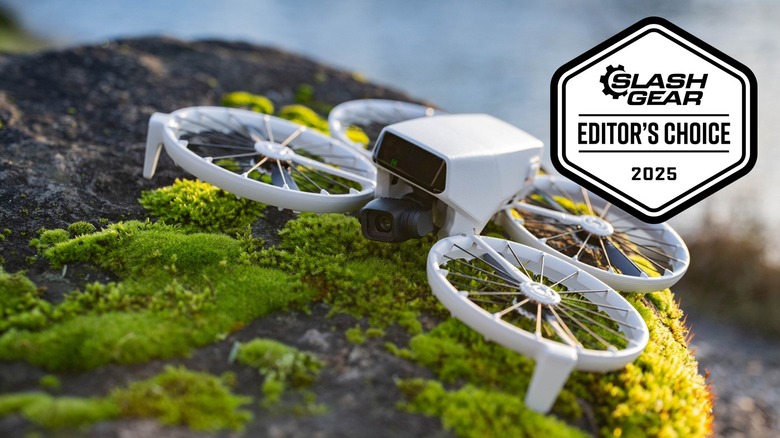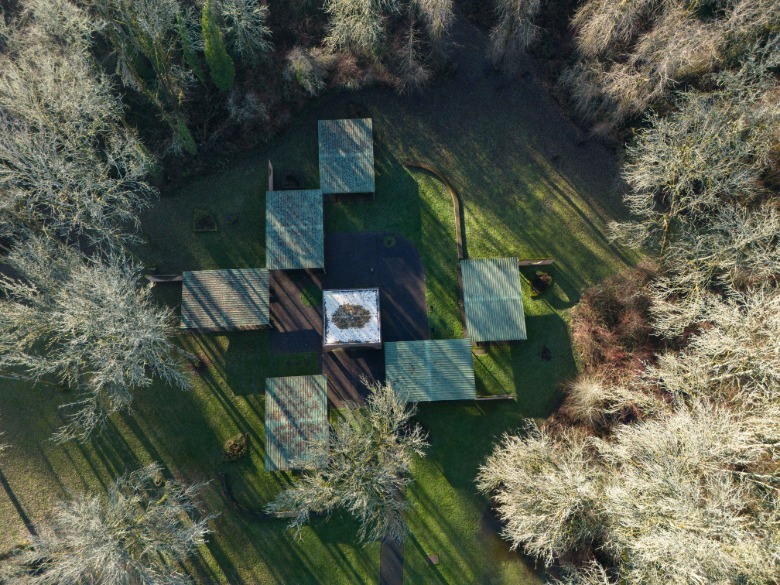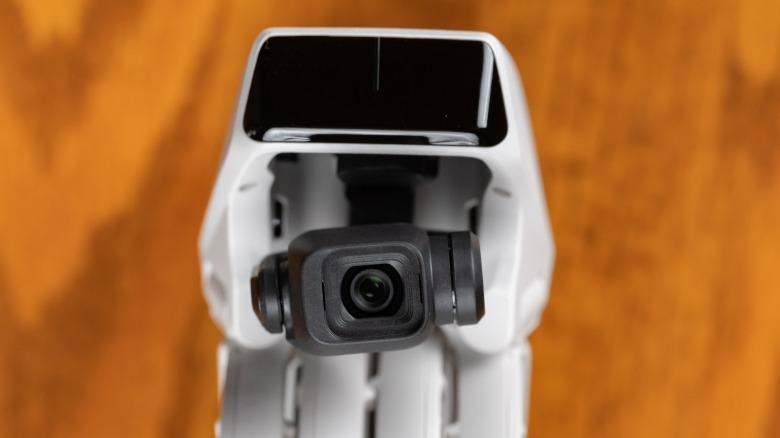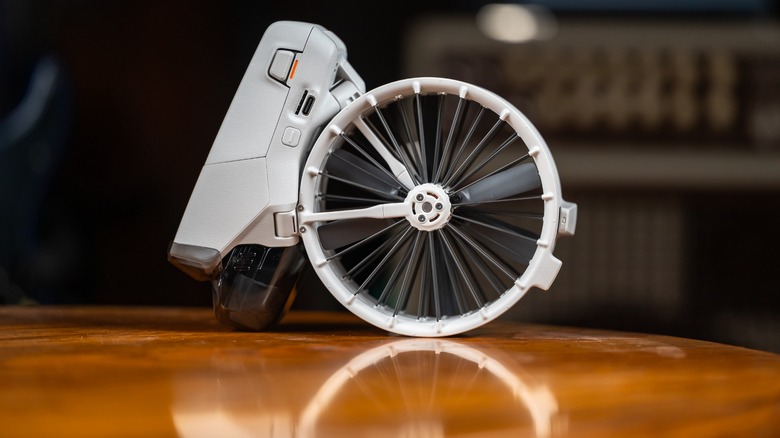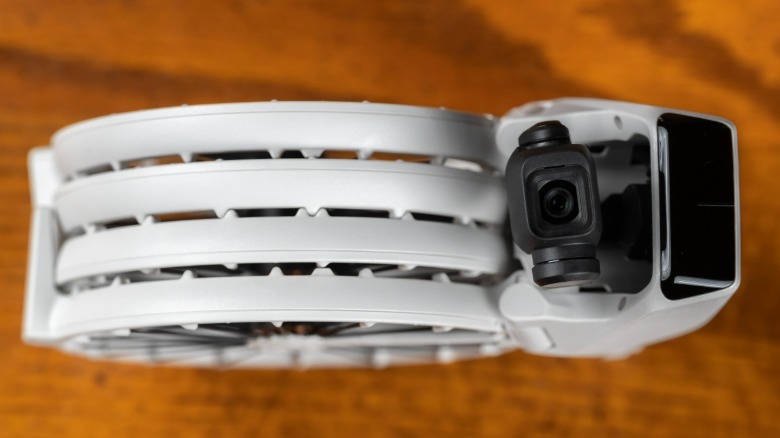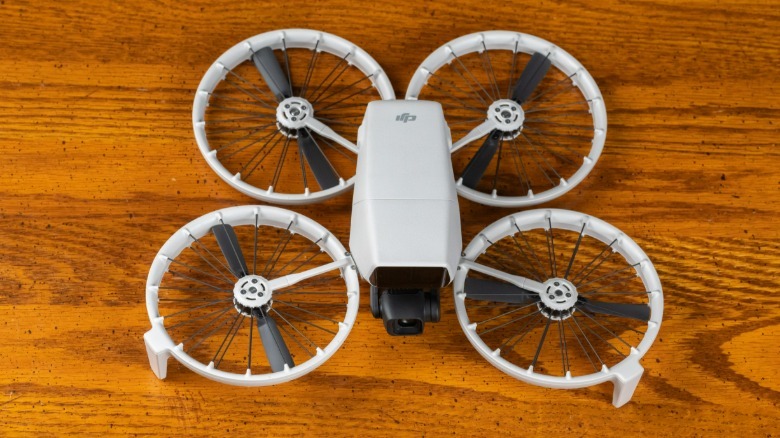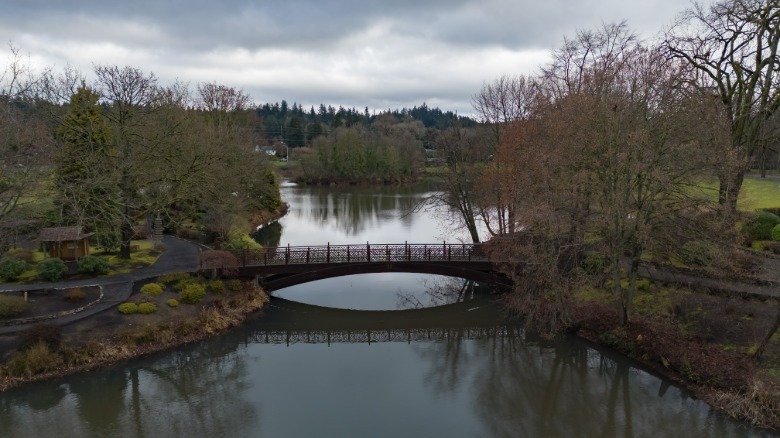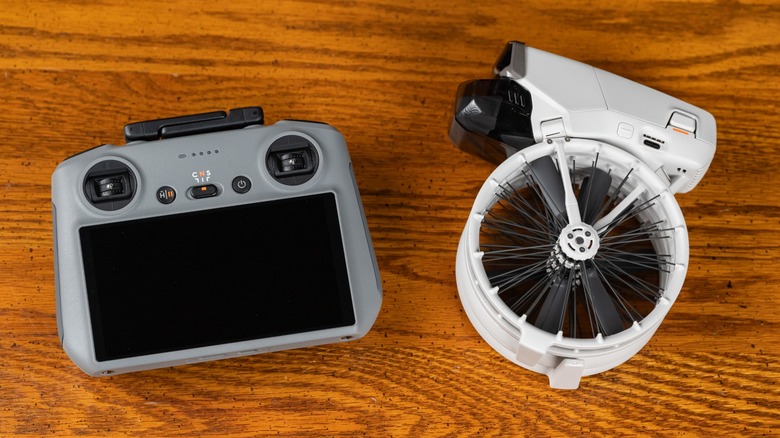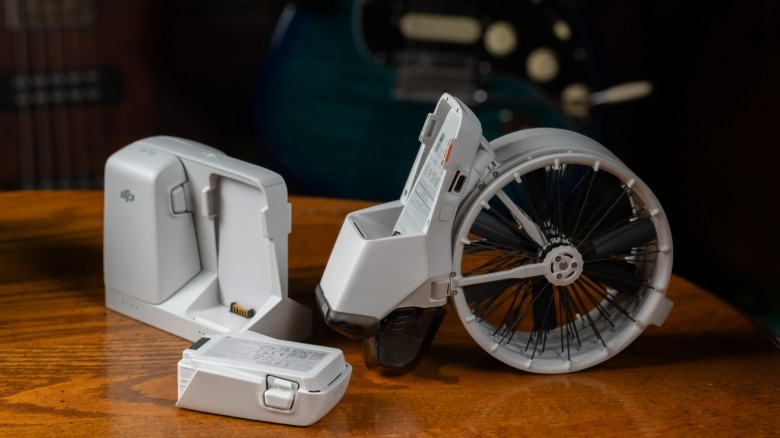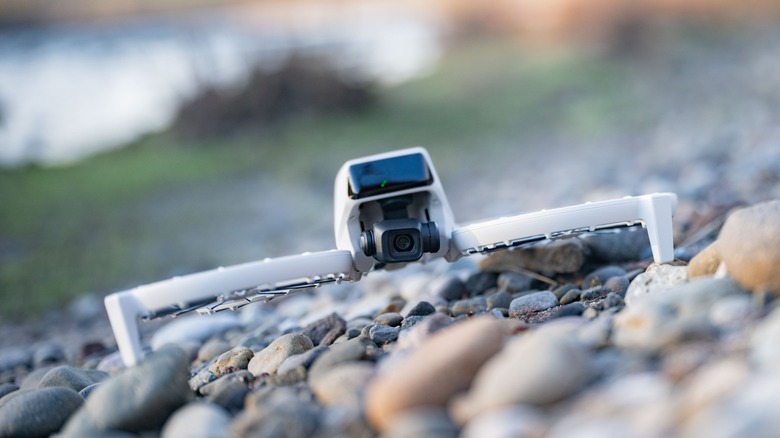DJI Flip Review: A Flipping Revolutionary Drone
- Good image quality
- Can be operated without a controller or smartphone
- Protected propellers
- Automatic hand landing
- Packable design
- Gimbal protector design isn’t great
For some time now, most drones have looked basically the same, which makes the DJI Flip something of a breath of fresh air. Whereas elsewhere consumer drones largely appear as variations on DJI's Mavic design, the Flip is initially startling for how very different it is. To look at it before you "flip" out its propellers and prepare for flight, you would be forgiven for wondering if it might actually be some sort of strange remote control unicycle camera. Even once unfolded, you're still looking at a camera drone that's got its propellers underneath it like an FPV drone, each protected by what most closely resembles the spokes of a bicycle wheel.
Don't let its looks fool you, because bizarre as the Flip may initially seem, it has some serious hardware under the hood that pushes the boundaries of what you'd expect to find in such a relatively affordable drone. If it's as capable as it appears on paper, the DJI Flip might well be the drone everyone will want to own in 2025. I've spent the last month putting the Flip through its paces.
3-axis gimbal and a relatively large sensor
While a 1/1.3 inch sensor isn't particularly huge by modern drone sensors, it is a massive upgrade over the 1/2 inch sensor found in the DJI Neo. Similarly, the Flip features a 3-axis gimbal compared to the single-axis gimbal of the Neo. The difference this makes is immediately apparent, as where the Neo is impressive for managing to provide usable image quality in such an inexpensive drone, the Flip delivers photos and videos that are really excellent.
Still images enjoy a great deal of resolution, thanks to the 48MP resolution of the sensor, which also features a f/1.7 aperture and Dual Native ISO Fusion, which combined with its large size delivers impressive low light performance for such a small drone. For video, the Flip records HDR video at up to 4K 60FPS, and a 10-bit D-Log M color mode is also available. Overall, the image quality the Flip delivers is absolutely fantastic given the price point of this drone.
Outside of the normal photo and video modes, The Flip can capture 4K 100fps slow motion video, as well as automatic panorama photos, and hyperlapse. The flip includes all the typical features such as the automatic camera movements known as MasterShots, which have become standard in DJI camera drones.
Unique design is as practical as it is cool
The visual comparison between the folded-down DJI Flip and the sort of droids found in Star Wars is striking. Each of its propeller guards is composed of thin spokes rather than plastic bars as is usual, and they each resemble nothing more than a bicycle wheel. In another wildly unusual design choice, the propeller blades are attached individually to the motor at the hub of the prop guards, rather than as one large unit with multiple blades. Each is shockingly short and thin, resulting in a drone that sounds very different to any other I've tested.
The Flip folds down into a fairly compact package, though unlike the Neo you're probably not going to make it fit in a pants pocket. With that said, I was able to jam it into a large coat pocket which was just large enough to comfortably accommodate it. As for weight, DJI has kept the Flip under 249 grams, which is great both for dodging the more stringent regulations placed on heavier drones, and for the ease of lugging the thing around.
The DJI Flip turns on automatically when you unfold it, and powers down when you fold it back down (though you can still power it off or on via a button as with any other DJI drone). My only gripe is with the gimbal protector, which like most such protectors included with DJI drones is plastic and rather fiddly to deal with. Given the design of the Flip, I would have liked to have seen a case which folded all the way around the drone with a simple clasp or magnetic snap.
Controller-free operation paired with advanced sensors
My favorite thing about the DJI Neo was its ability to perform a variety of preset functions through a button on the drone itself, no controller needed. The DJI Flip works the same way, offering subject tracking, "dronie", and "rocket", among other automatic flight modes. Simply unfold the drone, select the desired mode, and press and hold while holding the drone flat on your palm facing you. The Flip will then take off and perform the desired function, returning to land on your outstretched hand.
This hand landing function works regardless of whether you're flying the Flip with a controller or not. I myself almost always hand-land, regardless of what drone I'm flying. In most drones it's a risky move that requires some skill to pull off, but with the Flip the propeller guards make it perfectly safe. Similarly, these propeller guards make the drone far safer to fly around other people or indoors than a typical drone.
One major advantage of the DJI Flip is its 3D ToF (Time of Flight) sensors which enable obstacle detection and automatic braking even at night. When flying in cine and normal modes with obstacle detection enabled, the drone displayed impressive reliability in avoiding serious collisions. Another cool trick is the ability of the DJI Flip to record your voice when connected to your phone while filtering out the noise of the drone, and the Flip will even respond to voice commands.
Just enough speed, with decent battery life
The DJI Flip won't be winning any races, and you probably want to be careful of windy conditions, but it has enough get-up-and-go that I never felt like I was being held back from getting the shots I wanted with it. I did end up turning on "sport" mode more often than with other drones to get the highest speed possible, an option which disables obstacle detection.
Like the Neo, the Flip is remarkably sturdy, its propeller guards giving it a marked advantage over more typical DJI camera drones such as Mavic 3 Classic. As I tested it extensively by flying in dense, forested areas, this led to inevitable encounters with tree branches. However, as with the Neo, the Flip always managed to recover from these minor accidents. This is in part due to the carbon fiber structure of the propeller guards, which look flimsy, but are in fact super strong and super tough.
The Flip boasts a maximum battery life of 31 minutes, which I found to be more than adequate. It's not as impressively long lived as the battery in the DJI Air 3S though, and you will probably want to have a spare battery or two.
Price point is highly appealing
Starting at $439 with the DJI RC-N3 controller (which you'll need a phone to operate), the DJI Flip falls into an extremely attractive price bracket, though you will need to spend a bit more for the $639 combo with the DJI RC 2 controller for the best experience with the drone. If you can swing it, I'd also recommend shelling out for the $779 Fly More combo, which includes not only the DJI RC 2 controller, but extra batteries and a multi-battery charger among other accessories. However, the $439 base price is also a perfectly legitimate choice given how one of the best use cases for the DJI Flip is on its own without even having to use a controller.
It's worth noting that the Flip is more than twice the cost of DJI Neo, but that price is certainly warranted given the massive upgrades which the Flip offers over the Neo, most notably in terms of its camera and gimbal as previously mentioned. However, the Neo is still a fantastic drone for beginners, and its smaller size means it fits in the pocket a lot more easily. Its more basic camera design is also more resilient to damage, and the Neo can be paired with the DJI Goggle N3 as an excellent, low cost, ready-to-fly FPV drone setup.
Given how good the Flip is, I'd recommend it over the more expensive DJI Mini 4 Pro (though that drone does still have a few advantages), and really if you want a major upgrade from the Flip you're looking at the $1099 DJI Air 3S.
DJI Flip Verdict
Where initially I expected the DJI Flip to simply be a more premium version of the DJI Neo, I came around to the realization that it's so much more. The Flip is a truly audacious drone, incorporating familiar elements from other DJI products into a completely unique design. The result is a deeply compelling camera drone that has something to offer everyone, from experienced pilots to complete novices.
The Flip is as easy and safe to use as the Neo, but with a camera and gimbal that deliver the high quality results that serious content creators are looking for. If you want to just have a drone you can throw in your bag and grab quick shots of yourself for b-roll, the Flip is absolutely ideal. While some will still want the more advanced capabilities, better camera, and faster speed of something like the DJI Air 3S or Mavic 3 Pro, the Flip is a faithful sidekick that can wear many hats with aplomb.
The DJI Flip is available from DJI's online store starting at $439.
